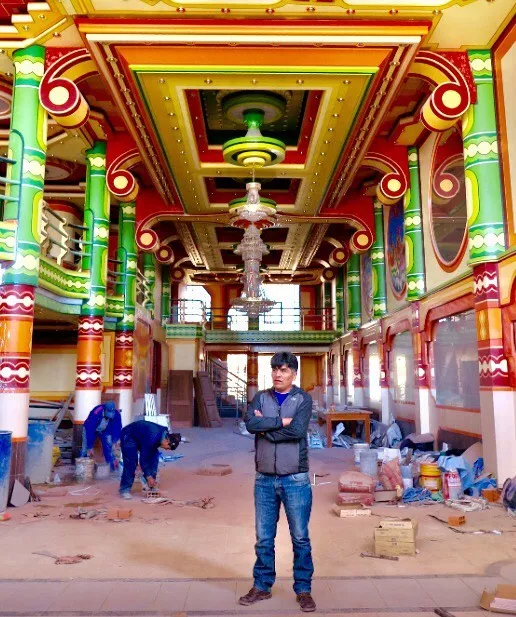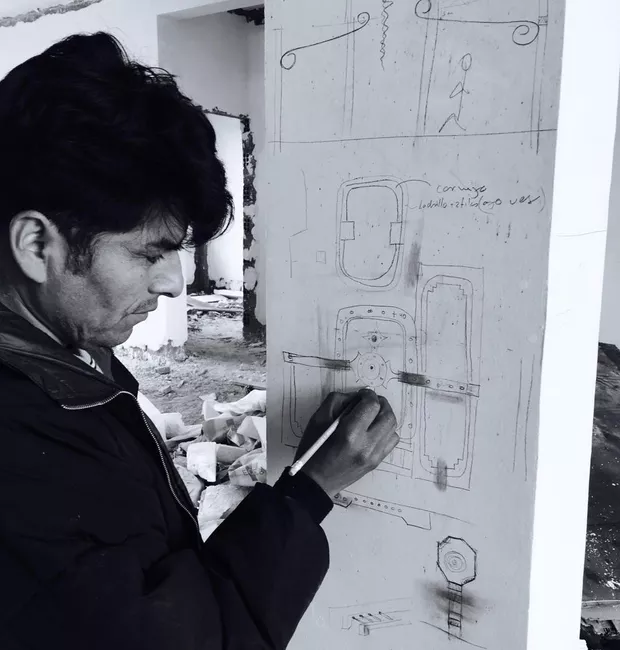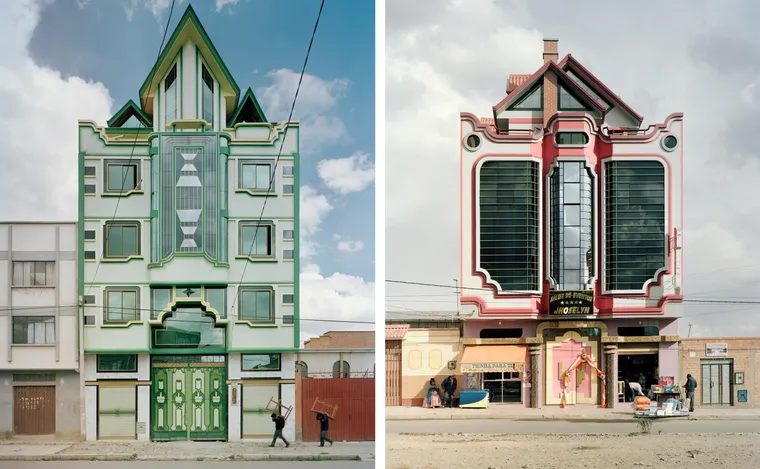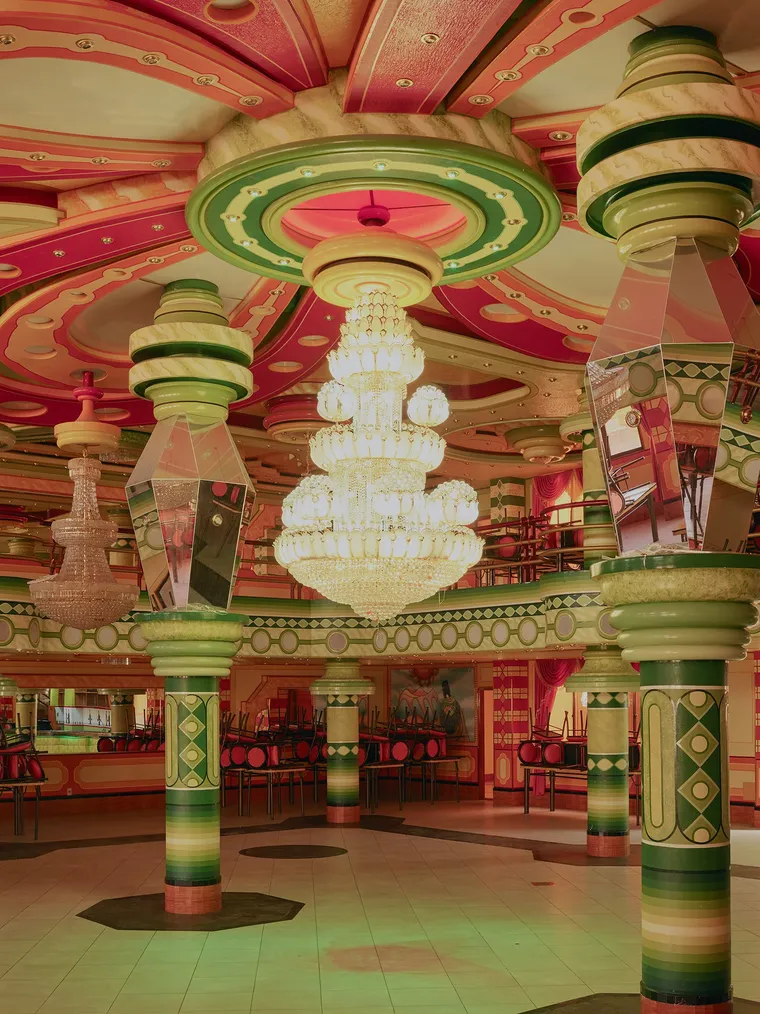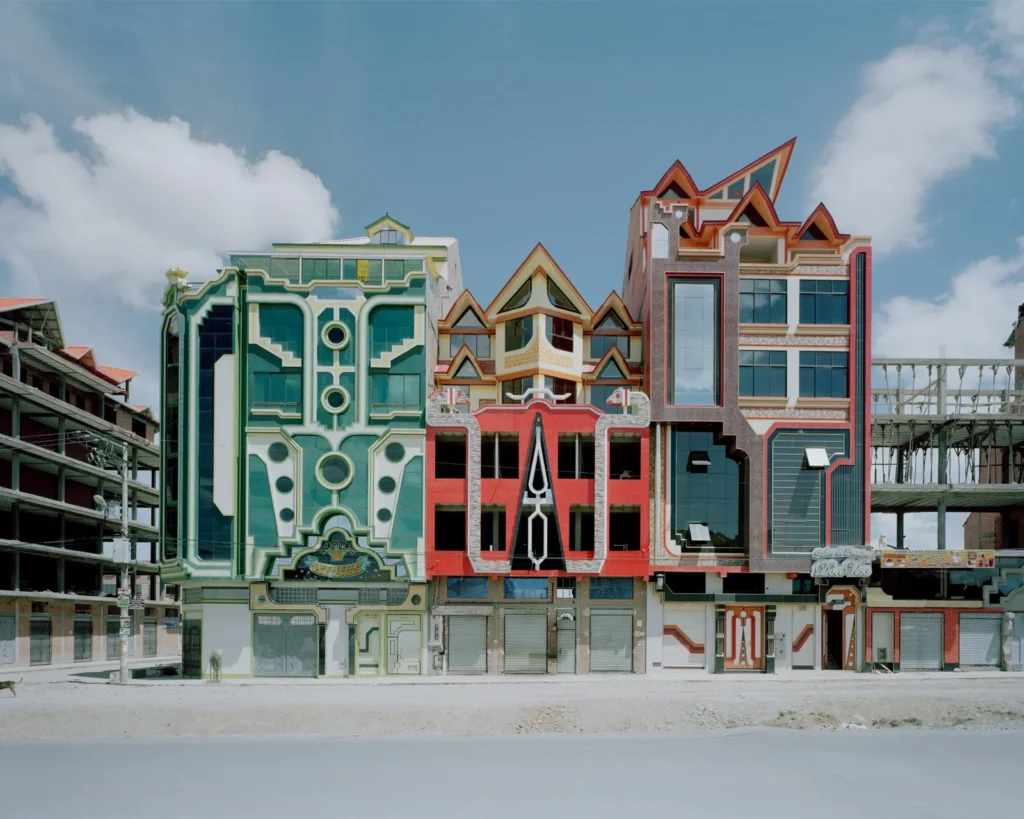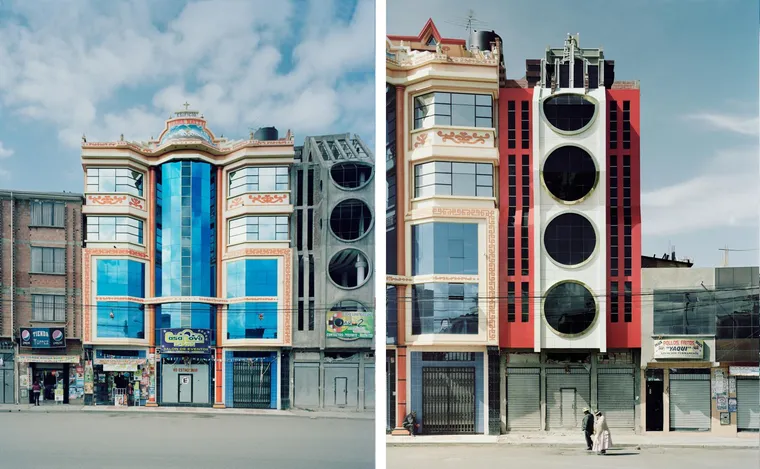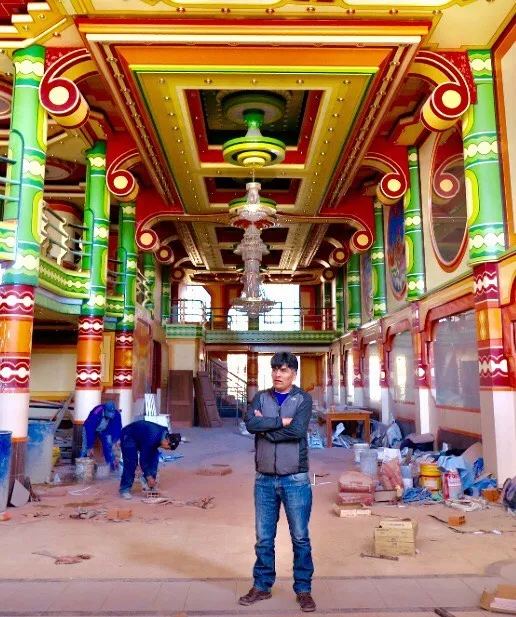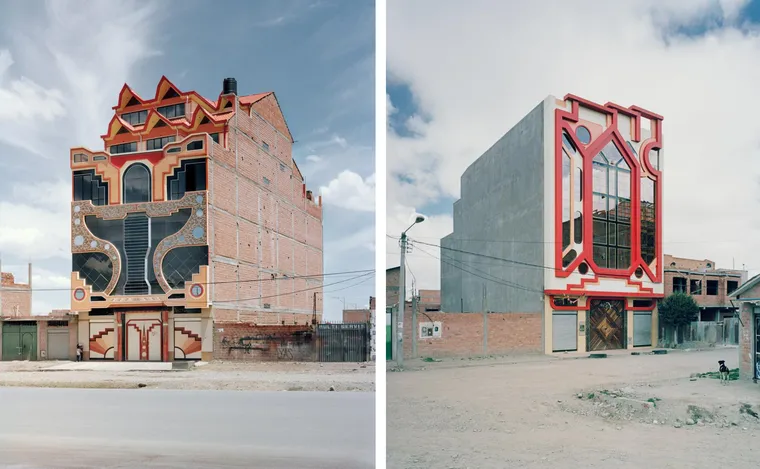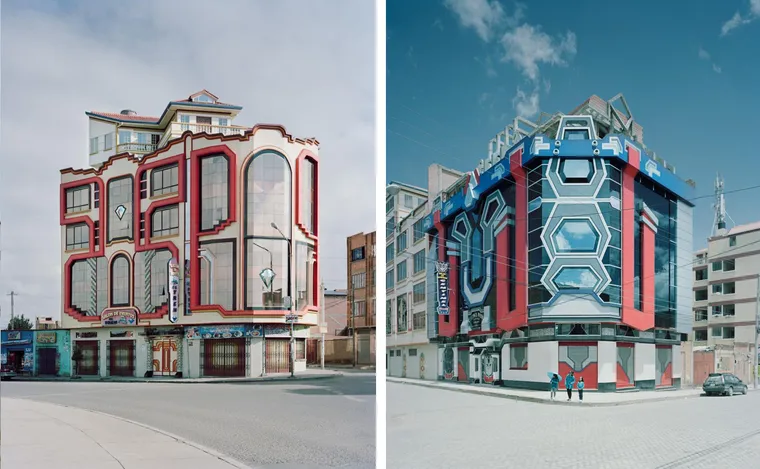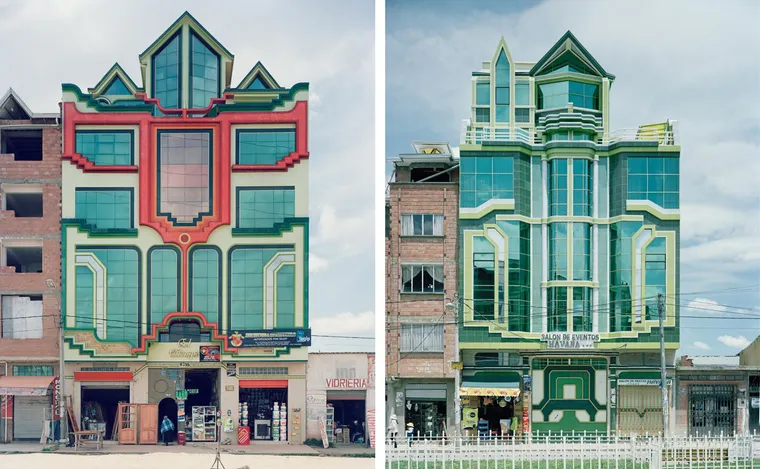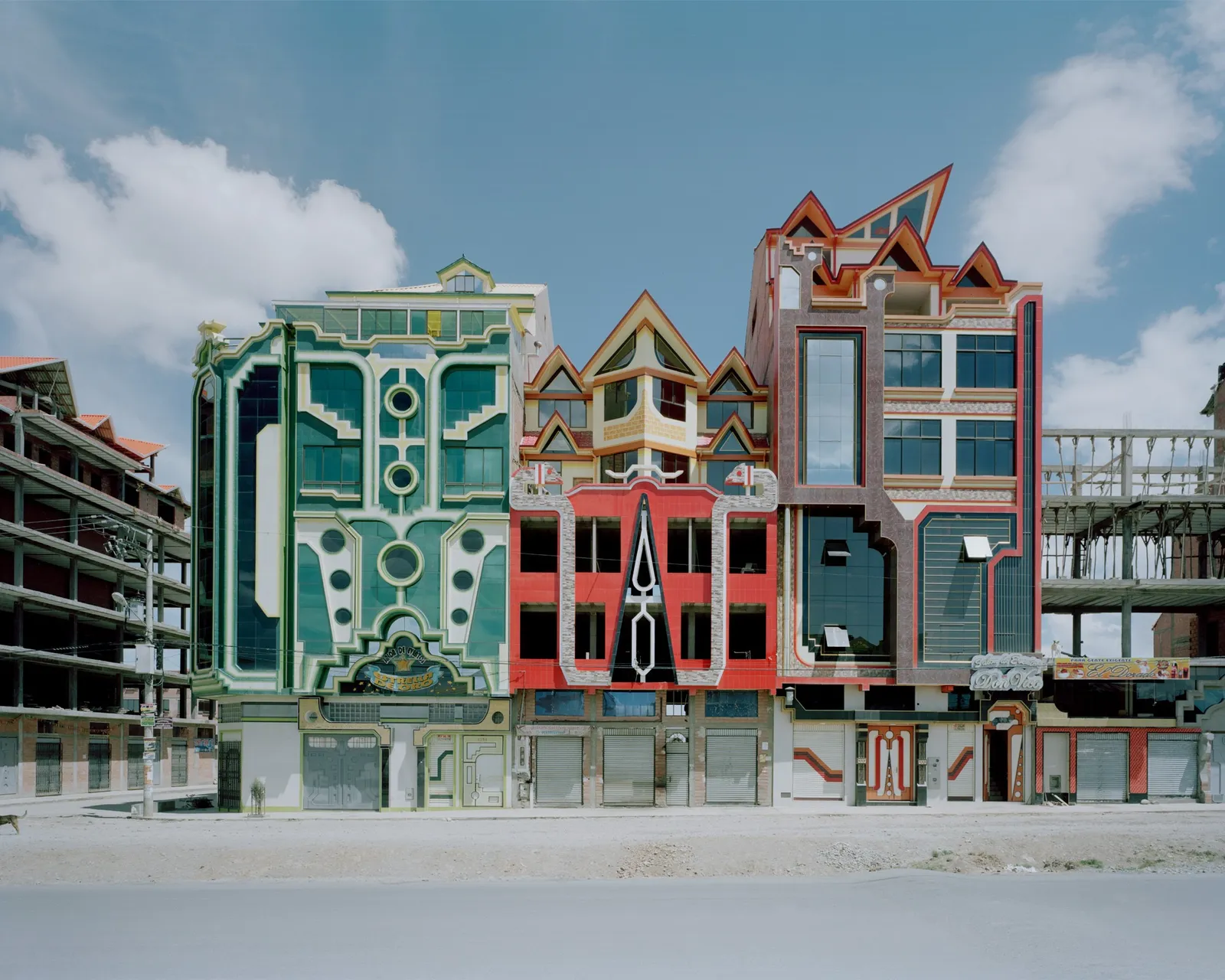
Neo-Andean architecture, led by Bolivian architect Freddy Mamani Silvestre, represents a vibrant fusion of the indigenous traditions of the Andes and urban modernity. This unique style has transformed the landscape of El Alto, Bolivia, since the 2000s, standing out for its intense colors, bold geometric forms, and deep connection to the Aymara cultural identity, an indigenous people of the Andes.
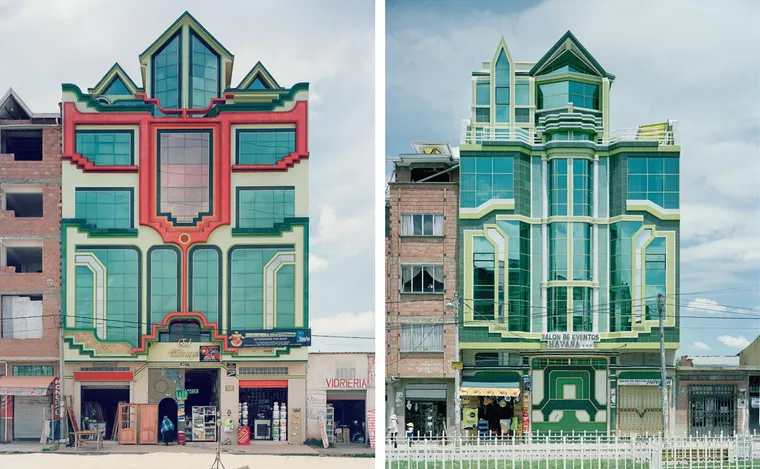
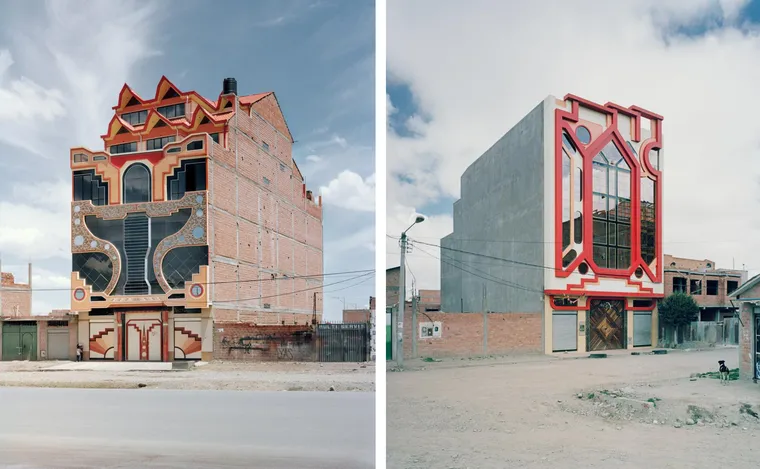
Born in 1971 in the Aymara community of Catavi, Freddy Mamani began his professional career as a mason’s assistant. He later graduated in Civil Engineering from the Bolivian University of Informatics. Although he has no formal academic training in architecture, Mamani developed his own style, reflecting the rise of a new indigenous middle class in El Alto, a city that was once monochromatic but has experienced significant growth in recent decades.
His references and inspirations are based on the local aesthetic of his ancestors: “My works incorporate shapes and ideas from the architecture used in the ancient imperial capital of Tiwanaku. I want to revive this aesthetic with contemporary elements.”
Neo-Andean architecture, also known as “cholet”, is characterized by buildings of 3 to 7 floors that combine residential, commercial, and party spaces. The term “cholet” is a combination of “cholo” (referring to indigenous or mixed-race people) and “chalet” (a European country house), reflecting a fusion of cultural influences.
These buildings stand out for their psychedelic façades, which incorporate elements of Aymara textile art, such as aguayos, traditional fabrics with geometric patterns and vibrant colors. Both the exterior and interior colors are inspired by fabrics created and worn by Aymara women, who make up 75% of El Alto’s population.
The interiors of cholets are equally extravagant, with architectural forms inspired by pre-Columbian archaeological sites and elements of nature, such as flowers and mountains. The use of mirrors, chandeliers, and LED lighting creates spaces with a futuristic and festive aesthetic.
More than residences or commercial spaces, cholets symbolize cultural pride and social mobility for the Aymara communities. By incorporating traditional elements in a modern context, Mamani created an architectural language that challenges established norms and promotes the visibility of indigenous culture in contemporary urban settings.
Freddy Mamani’s work has gained international recognition, being featured in exhibitions and architecture publications. He has built around 70 buildings in El Alto and more than 100 across Bolivia. His work attracts tourists from around the world, boosting local tourism and establishing Neo-Andean architecture as a cultural landmark.
To explore more about Freddy Mamani’s work and his contribution to contemporary architecture, videos and documentaries provide an in-depth view of his approach and impact.
